Thought the 1950s couldn’t get any scarier? Think again. Imagine communists ruling all over Europe, the Soviet Union stretching from Finland in the northwest to Port Arthur in the southeast, Britain under the sway of “Big Brother”, America ruled by President-for-Life Douglas MacArthur, and East and West vying for influence in Africa and the Middle East.
This atompunk world is on its way to George Orwell’s Nineteen Eighty-Four (1949) and, in Britain, could culminate in the events of Chris Mullin’s A Very British Coup (1982), in which civil servants, spies and business leaders conspire to bring down a left-wing government (our review of the 1988 television adaptation here).
Other inspirations include Alan Moore’s and Kevin O’Neill’s The League of Extraordinary Gentlemen: Black Dossier (2007) and the Command & Conquer: Red Alert video games.
Soviet Union

The Soviet Union defeats and occupies Finland in the 1939-40 Winter War. After World War II, it annexes Finland as well as the Baltic states, Poland and Moldavia. Joseph Stalin leverages Russia’s position of strength in Eastern Europe to demand that the Western Allies recognize its influence in Scandinavia, the Balkans, Mongolia and Manchuria, which it liberated from the Japanese.
In the Far East, the Soviets annex Port Arthur and rename it Primorsk. South of the Caucasus, parts of northwestern Turkey are transferred to the republics of Armenia and Georgia, fortifying Russia’s position on the Black Sea.
After the Korean Peninsula is divided along the 38th parallel in the War of 1950-53, Moscow retains strong influence in Pyongyang.
In a bid to lure what’s left of free Europe into the Soviet fold, the Comintern promotes “Eurasianism”: the belief that all of Europe and North Asia must one day be united in a single superstate.
France and Italy next?

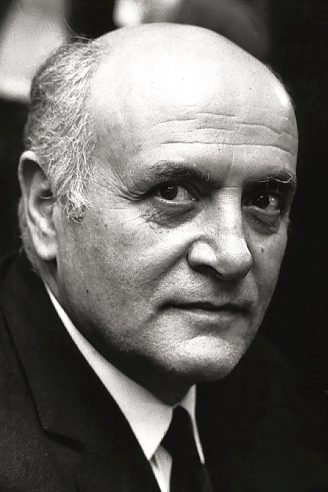
The Communist Party rules France, which has remained outside NATO. President Maurice Thorez claims to be his own man but is widely perceived as a Stalin puppet. His government has given independence to Algeria and Indochina, where Soviet-backed communists are now in power.
The Italian Communists run neck and neck with the Christian Democrats in parliamentary elections but have yet to prevail. The United States support the government of Altiero Spinelli, a former communist who broke with Stalin.
Airstrip One
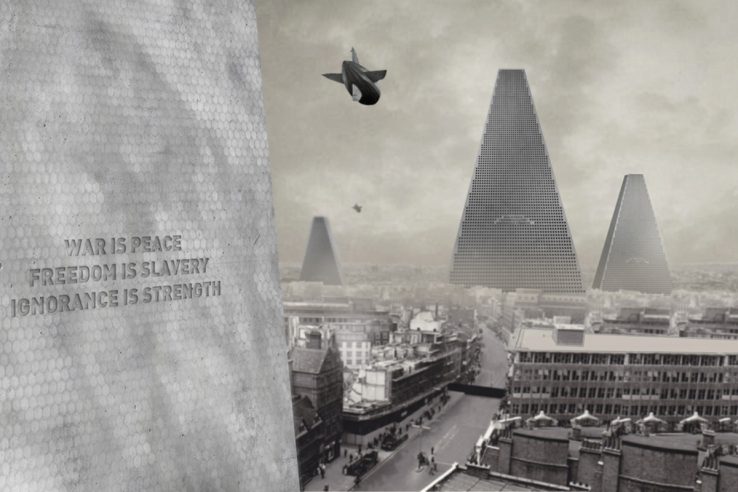

Britain is socialist but anti-Moscow. Both the Conservatives and Labour have embraced English Socialism, also called Ingsoc, as the only alternative to communism. Prime Minister Harold Wharton, who fought valiantly in World War II, is affectionately known as “Big Brother” for giving Britain the welfare state.
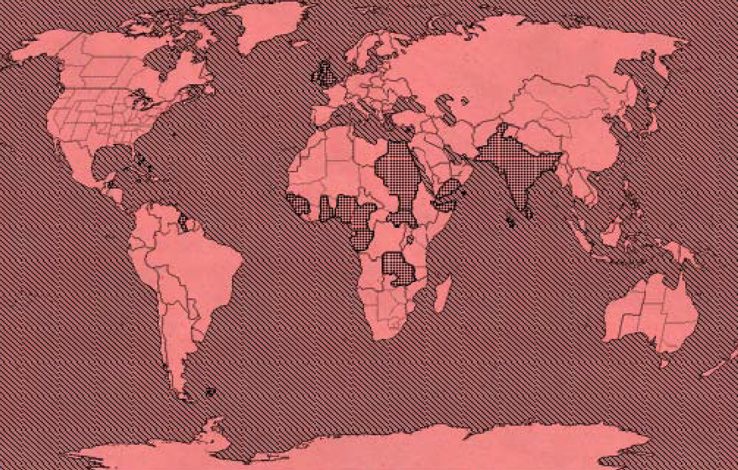
The Commonwealth maintains a close alliance with the United States. The Americans jokingly refer to Great Britain as “Airstrip One”, given its importance as a base for nuclear bombers that can reach deep inside Soviet territory.
The militarized presidency
Republicans drafted General Douglas MacArthur as their presidential candidate in 1952 to run against Harry Truman and what they saw as the failure of containment. MacArthur easily beat the isolationist senator Robert A. Taft at the Republican National Convention in Chicago and then cruised to victory in the general election.
MacArthur ordered the use of tactical nuclear weapons in an attempt to bring a swift end to the Korean War, but when the Soviet Union threatened to retaliate he agreed to a ceasefire that divided the peninsula in two.
Democrats, led Adlai Stevenson, criticize this about-face, as they do the president’s penchant for appearing at military ceremonies in his old uniform. But none of it seems to perturb MacArthur’s supporters, to whom he is a legend. Republicans are holding up ratification of the Twenty-second Amendment to the Constitution (which limits presidents to two terms), believing they may have found a president-for-life.
Architectural megalomania
MacArthur’s presidency, and America’s preeminence in the world, is inspiring building projects on a grand scale.


In New York, real-estate mogul William Zeckendorf is building an airport the size of Central Park on the Hudson River shore. 200 feet high, the facility will also house apartments, office space and a harbor.
On the other side of Manhattan, in the location occupied by the United Nations in our world, Zeckendorf is building Hugh Ferriss’ X-City: a complex of apartment and office buildings, a marina and a new home for the Metropolitan Opera.

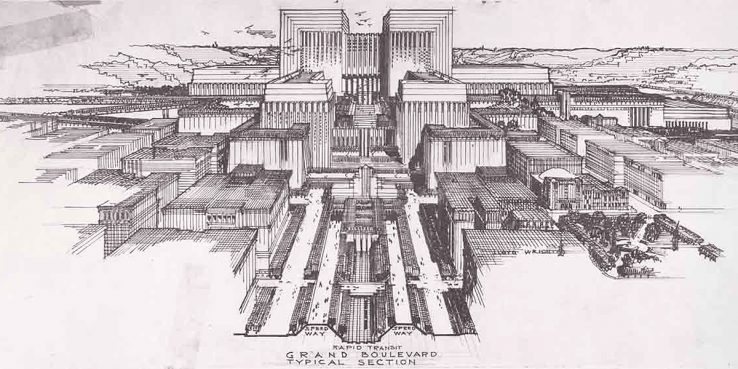
In Los Angeles, the original design for the LAX Theme Building has been carried out, giving the airport an enormous glass dome that connects all the terminals. Construction is underway on an acropolis-style Civic Center designed by Lloyd Wright that houses City Hall, county offices, courthouses and police headquarters.
Click here for more unbuilt New York and here for more unbuilt Los Angeles.
English-Speaking Union
With Britain’s empire in decline, there is support among Anglophiles in the United States for merging with it and its white dominions: Australia, Canada, New Zealand and white-ruled South Africa. Ireland could be included as well. Britain is resistant but may be forced to acquiesce if the rest of Europe falls under Soviet control.
Click here to learn more about a real-world proposal to unify the English-speaking world.
Mad China
Mao’s China is hell-bent on revenge after losing Manchuria to its erstwhile ally, Russia. Chiang Kai-shek has yet to accept defeat in the Chinese Civil War. His supporters continue to wage a low-level insurgency against the communists in Peking.
Mao’s Great Leap Forward has created the worst famine in human history and turned China into one giant killing field. The regime promotes the “obliteration of the self” as official ideology. It claims to have tested its first atomic weapon, but America and the Soviet Union are skeptical. It doesn’t look like China will be able to pose a threat to either for at least a generation.
Proxies in the Middle East

The Atlantic powers vie with the Soviet Union for influence in the Middle East. Lebanon and Syria — formerly under French rule — as well as Iran are aligned to Moscow, putting NATO Turkey at a disadvantage. The Arab kings side with the West, although a movement for Arab independence is burgeoning in Egypt, led by Gamal Abdel Nasser.
Stalin’s plan to invade Spain
The United Kingdom and the United States maintain an uneasy alliance with the regimes of António de Oliveira Salazar in Portugal and Francisco Franco in Spain. The Soviet Union had supported the Republic in the Spanish Civil War and lost. With Franco’s fascist allies defeated in World War II, Stalin is out for revenge.
This is another reason for the Soviet Union to back the communists in France and Italy; an invasion of Spain would require either as a springboard.
Click here to learn more about Stalin’s plan to invade Spain.
Soviet plan to thaw the Arctic
In the Far North, the Soviets are building a 55-mile dam between Alaska and Siberia to keep icebergs and Arctic currents out of the Pacific Ocean, which would allow warm southern currents to sweep unchecked up the eastern shore of Siberia and down the western coast of North America. Warm water from the Pacific would be pumped back into the Arctic and transform the now-frozen region into a blossoming landscape. At least, in theory.
The Americans object to the plan, which means the dam might never reach Alaska. Unless the Russians were to take back what they sold in 1867…
Click here to learn more about the Soviet plan to thaw the Arctic.


If a dam is out of the question, how about a tunnel? Anti-MacArthur Democrats, like Senator Warren Magnuson of Washington state, have thrown their support behind the proposal in hopes of deterring unilateral Soviet dam-building and bringing about a rapprochement between the superpowers.
Floating fortresses
America is replacing its surface combat fleet with immense floating fortresses that concentrate the firepower of an entire naval task force in a single, semi-mobile platform. They are considered ideal for sea lane interdiction and denial.
The British prefer aircraft carriers floating on huge chunks of ice, an outgrow of the World War II-era Project Habakkuk. Click here to learn more about it.

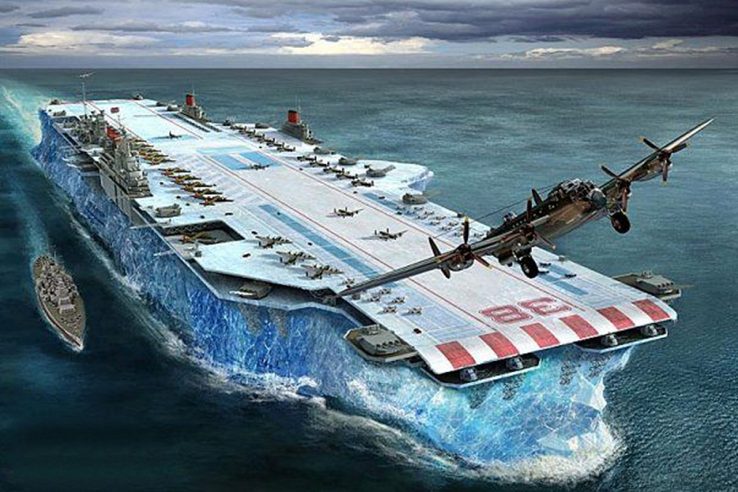
Monstrous Soviet tanks
Soviet forces are superior on land. Deadly Tesla Tanks leverage energy weapons invented by Nikola Tesla. Their lightning bolts can pass over obstacles like walls and are extremely effective against infantry. The Apocalypse runs on a hybrid diesel-nuclear power engine and boasts two forward-facing cannons that can destroy lighter vehicles with a single volley.
Click here for more weapons from the Red Alert video games.


Aircraft
America flies nuclear-powered strategic bombers that can reach deep inside the Soviet Union’s borders. Cruising at Mach 3+, North American Aviation’s Valkyrie is virtually immune to interceptor aircraft.
The Soviet Union’s response, the M-50, was built by the Myasishchev Experimental Design Bureau. It has four jet engines. The two inner engines are located under the wings; the two outer engines are mounted on the wingtips.


Another Soviet novelty is the ekranoplan, or ground-effect vehicle. Known as “sea monsters” to the Americans, these hovercraft-like aircraft use the aerodynamic interaction between the wings and the surface to lift off. They are used to patrol the Baltic and Black Seas.
Click here to learn more about America’s atomic-powered bombers and here to learn more about the strange aircraft of the Soviet Union.


Nuclear balance of terror
Like our Cold War, what stops this one from going hot is the threat of nuclear retaliation.
Although intercontinental ballistic missiles are still in their infancy, and the threat of mutually assured destruction is more theory than reality, both the Soviet Union and the United States operate nuclear bombers and submarines that can annihilate military bases and population centers across each other’s territory.


Planning for World War III
America’s plan for World War III, codenamed Operation Dropshot, calls for the use of 300 nuclear bombs and 29,000 high explosives, launched from airbases in Alaska, Okinawa, the Persian Gulf, the United Kingdom and the continental United States, against Soviet nuclear sites, lines of communication, supply bases, troop concentrations, and electrical power, petroleum and steel targets.
Altogether, 200 targets in 100 Soviet cities and towns would be wiped out with the goal of destroying 85 percent of the Soviet Union’s industrial capacity. The hope is that this would force surviving Soviet leaders to surrender.
The Soviet Union’s offensive plan calls for a ground invasion of Europe through Germany supported by tactical nuclear weapons. Major European cities and all American military bases in West Germany and the Low Countries would be destroyed. The goal is to prevent an Allied defense at the Rhine and drive NATO into the sea.

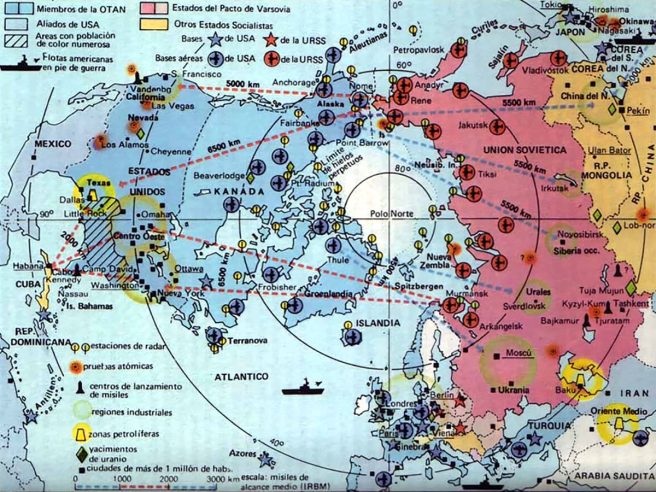

Click here to learn how World War III might have been fought in the 1950s.












1 Comment
Add YoursI am once again reminded of the ancient Chinese curse:- “May you live in interesting times!”